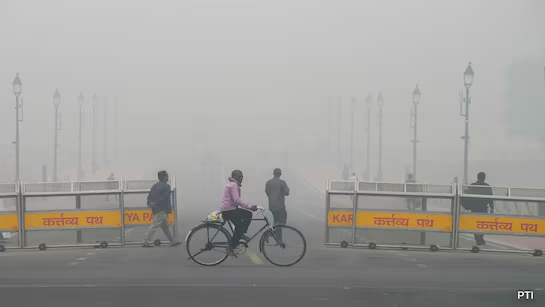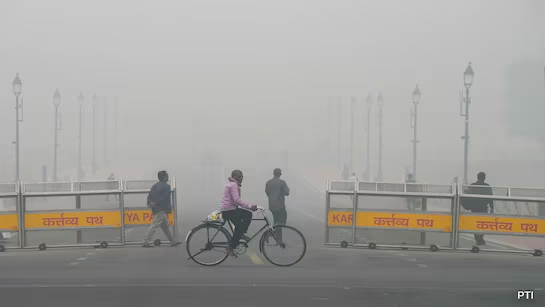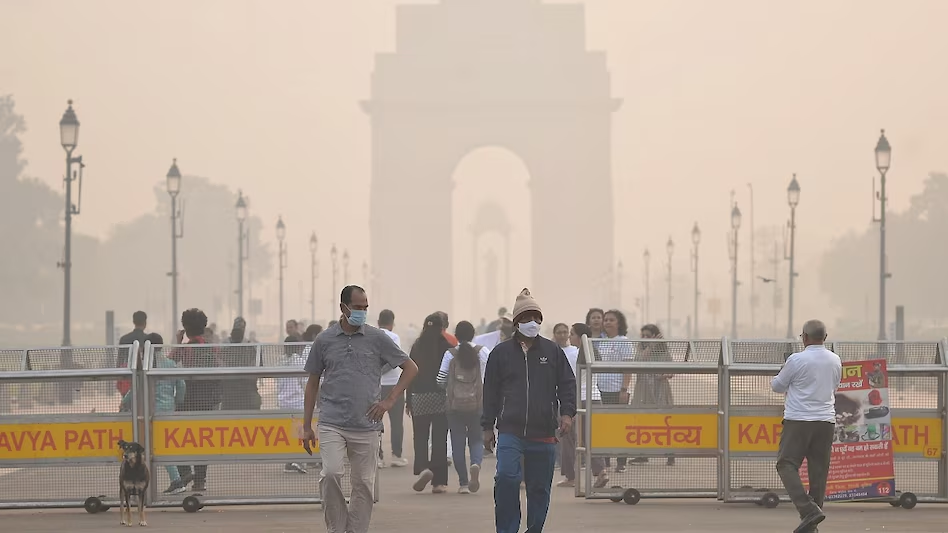Delhi pollution has become a symbol of urban suffocation — a crisis that impacts over 30 million residents every single day. With AQI levels frequently crossing 400, the capital’s air turns poisonous, forcing citizens indoors and sparking nationwide concern.
But here’s the truth: Delhi pollution isn’t just about vehicles or crackers. It’s a multi-layered issue rooted in human activity, industrial negligence, and natural conditions.
Before we uncover the hidden causes, let’s understand why Delhi pollution has reached emergency levels year after year.

Understanding the Scale of Delhi Pollution
Delhi pollution ranks among the worst in the world, according to the World Air Quality Report (2024). The city’s average PM2.5 concentration often exceeds WHO’s safe limit by 10 to 12 times.
Each breath taken in Delhi equals smoking 10–15 cigarettes a day — a grim comparison made by environmental researchers.
Key Stats:
| Metric | Value (2024) | Safe Limit (WHO) |
|---|---|---|
| PM2.5 (µg/m³) | 250+ | 25 |
| AQI (Average Winter) | 420–480 | 0–50 |
| Life Expectancy Reduction | 8 years | N/A |
“Delhi pollution is not just an environmental crisis — it’s a public health emergency.” — Centre for Science and Environment (CSE)
Economic and Health Impact of Delhi Pollution
The cost of Delhi pollution goes beyond breathing discomfort. It drains billions from India’s economy every year due to lost productivity, healthcare costs, and school closures.
- Healthcare Impact: In 2023, over 1.2 million people in Delhi sought treatment for respiratory problems linked directly to poor air quality.
- Economic Impact: A World Bank report estimated that India loses 8.5% of its GDP annually due to pollution-related health damage.
Case Study:
A 35-year-old IT professional from Noida shared that his chronic cough worsened every winter, forcing him to relocate temporarily to Dehradun. His condition improved within weeks — a living example of how Delhi pollution affects health outcomes.
1. Stubble Burning: The Seasonal Smoke Blanket
Each winter, smoke from Punjab and Haryana blankets the capital, raising PM2.5 levels drastically. Farmers burn crop residue for quick land clearing — releasing massive amounts of carbon and black soot.
According to SAFAR, crop fires contribute 25–35% of the total pollutants during November.
While farmers are often blamed, experts argue the real problem is lack of affordable alternatives.
Pro Tip: Encourage adoption of eco-friendly machinery like Happy Seeder and offer financial incentives for farmers who avoid burning.
ALSO READ: Delhi Air Pollution: Real-time Air Quality Index (AQI)
2. Vehicular Emissions: The Moving Cloud of Toxic Gas
Delhi’s roads carry over 1.4 crore vehicles, making it the largest transport network in India. Diesel cars, old buses, and trucks are the biggest contributors to Delhi pollution year-round.
Studies show that 40% of PM2.5 emissions in Delhi come from vehicles alone — especially during traffic congestion.
Solution: Promote EVs, carpooling, and public transport. Implement odd-even policies effectively to limit daily emissions.

3. Construction Dust: The Overlooked Air Polluter
From metro projects to real estate construction, dust particles rise continuously. Without dust control measures, construction contributes nearly 30% of airborne PM10 in Delhi.
Quick Fix:
- Cover sites with green nets.
- Use on-site sprinklers.
- Store debris properly.
These simple steps can reduce Delhi pollution from construction by nearly 50%, according to the Delhi Pollution Control Committee (DPCC).
4. Industrial Pollution: Factories on the Outskirts
Many industries in NCR — Ghaziabad, Faridabad, Sonipat — use outdated chimneys and dirty fuels. These emit sulphur dioxide, carbon monoxide, and unfiltered soot directly into the air.
Pro Tip: Shift factories outside dense areas and make CNG or PNG fuel use mandatory for industrial heating.
5. Household Emissions: The Hidden Source
Surprisingly, Delhi pollution also comes from households. In many unauthorized colonies, residents still use coal or wood for heating and cooking. The smoke seeps outside, combining with outdoor emissions.
“The smoke from your kitchen adds to the haze outside your window.” — Environmental activist Vandana Singh
6. Weather Patterns and Topography
Delhi’s geography traps pollutants like a bowl. In winter, cold air sinks and prevents upward air movement — creating the smog blanket we see every November.
A NASA satellite study in 2024 showed that Delhi pollution worsens 3x during low wind days due to lack of pollutant dispersion.
7. Waste Burning and Landfills
Delhi produces 11,000 tonnes of waste daily, much of which is openly burned at landfills like Ghazipur and Bhalswa.
This illegal burning releases dioxins, furans, and microplastics, worsening Delhi pollution and respiratory illnesses.
Case Study:
According to TERI, open waste burning adds 11% of PM10 and 9% of PM2.5 to Delhi’s annual air load.

Government Measures to Control Delhi Pollution
Delhi has implemented multiple programs such as:
- Odd-Even Vehicle Scheme
- Graded Response Action Plan (GRAP)
- Ban on Construction & Firecrackers during high AQI days
- Introduction of BS-VI fuel standards
However, experts say consistent enforcement, not policy creation, is key to combating Delhi pollution.
How Citizens Can Help
You can be part of the solution by:
- Using public transport more frequently.
- Avoiding open waste burning.
- Growing indoor plants that absorb CO₂.
- Checking daily AQI levels using apps like SAFAR.
- Supporting eco-friendly brands and sustainable habits.
Final Thoughts
Delhi pollution is not a seasonal inconvenience — it’s a man-made disaster that affects our lungs, minds, and future generations. To breathe clean air again, collective responsibility is crucial — from policymakers to residents.
“Clean air should not be an aspiration; it’s a human right every Delhiite deserves.”

FAQs
About the Author
Vikrant Rajput is a health and lifestyle blogger who writes about fitness, environmental issues, and wellbeing. He aims to educate readers on the long-term impact of Delhi pollution and how small changes can make a big difference.
Visit: thedigidine.com








Leave a Reply